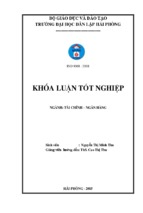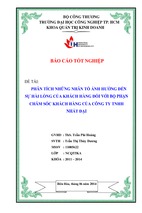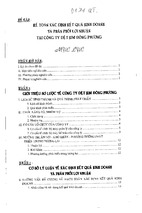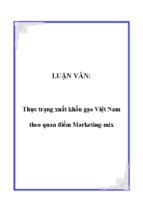The World’s Biggest Customer…page 45 You’re Being Followed…page 76
www.hbr.org
September 2004
Make
Time
to Lead
…page 58
58 Stop Wasting Valuable Time
Michael C. Mankins
68 How Global Brands Compete
Douglas B. Holt, John A. Quelch, and Earl L. Taylor
76 Why People Follow the Leader:
The Power of Transference
Michael Maccoby
88 Deep Smarts
Dorothy Leonard and Walter Swap
98 Diversity as Strategy
David A. Thomas
18 Forethought
31 HBR Case Study
The Micromanager
Bronwyn Fryer
45 Big Picture
New Business with the New Military
Mahlon Apgar, IV, and John M. Keane
110 Tool Kit
Customer-Centered Brand Management
Roland T. Rust, Valarie A. Zeithaml,
and Katherine N. Lemon
121 Best Practice
Building Deals on Bedrock
David Harding and Sam Rovit
134 Executive Summaries
140 Panel Discussion
But since we’ve been a
global leader in embedded
processors for more than
50 years, we won’t be that
hard to recognise.
Since our birth in 1953 as Motorola Semiconductor, we’ve been a leading force in
the semiconductor industry. As Freescale™, we continue to be recognised as the embedded
processing leader for a connected world. With over 4,900 patent families and a proven record
of industry innovations in such areas as process technology and ball-grid array packaging
technology, we’re providing the foundation for today’s and tomorrow’s semiconductor
markets. And with our 22,000 dedicated employees and extensive global resources,
our market leadership spans industries as diverse as automotive,
networking, industrial controls, consumer electronics and wireless
communications. Learn more about how Freescale can accelerate
possibilities in your business. Visit www.freescale.com
Freescale™ and the Freescale logo are trademarks of Freescale Semiconductor, Inc. All other product or service names are the property of their respective owners. © Freescale Semiconductor, Inc. 2004.
Freescale is our new name.
ALL ABOARD THE MAGIC BUS.
HBR
Features
88
September 2004
58 Stop Wasting Valuable Time
Michael C. Mankins
76
If your top executive team is like most, it spends no
more than three hours a month discussing strategy –
and much of that time is wasted. A few simple changes
can turn frustrating, aimless meetings into a streamlined, effective tool for making decisions that lead to
real competitive advantage.
68 How Global Brands Compete
Douglas B. Holt, John A. Quelch, and Earl L. Taylor
With antiglobalization and anti-American sentiments
rising, transnational firms are ducking for cover. But they
shouldn’t be. They should be courting consumers by
focusing on quality, social responsibility, and the myths
their brands weave.
76 Why People Follow the Leader:
The Power of Transference
Michael Maccoby
Chances are, people in your organization relate to you
not just as a leader but as an important person from
their past, such as a parent. Pay close attention to these
transferences. Managing them well can make the
difference between an antagonistic and unresponsive
workplace and one that hums with productivity and
creative energy.
88 Deep Smarts
Dorothy Leonard and Walter Swap
People with deep smarts know your business, your customers, and your product lines inside and out. This kind
of know-how takes years to acquire – and no time at all to
lose when your veterans walk out the door. It’s critically
important to pass along such expertise to novices in
the organization. But what comes first – the learning
or the doing?
98 Diversity as Strategy
David A. Thomas
68
By partnering with employees to promote diversity, IBM
not only became a more attractive place to work, it also
created millions of dollars in new business.
COVER ART: LAURENT CILLUFFO
continued on page 8
58
6
harvard business review
YOU MAY NOT KNOW EVERYTHING WE MAKE. BUT EVERYTHING WE MAKE IS VITAL.
At Tyco International we make more than 200,000 products for hundreds of different industries.
Including the Scott respiratory-protection units that firefighters and other first responders rely on
every single day. From life-saving firefighter equipment to home security systems to medical sensors
and instruments, everything we make is a vital part of your world.
ELECTRONICS
ENGINEERED PRODUCTS & SERVICES
FIRE & SECURITY
HEALTHCARE
PLASTICS & ADHESIVES
www.tyco.com
HBR
D e pa r t m e n t s
September 2004
10
86
FROM THE EDITOR
S T R AT E G I C H U M O R
Practical Cats
Executives attempting to deal with
difficult business problems often feel
as though they’re herding cats. The
comparison is misleading, though, if
you take it to mean “you can’t do anything about cats.” Herding isn’t the
same as managing. Cats can be managed – they just can’t be managed as
you would manage cattle.
20
110
Customer-Centered Brand
Management
Roland T. Rust, Valarie A. Zeithaml,
and Katherine N. Lemon
Brand management still trumps customer management in most large companies, and that focus is increasingly
incompatible with growth. Here are
seven ways to put brands where they
belong – in the service of growing
customer equity.
FORETHOUGHT
18
20
22
24
26
Get Self-Organized
The Confession Game Plan
Perfecting Cross-Pollination
There’s Gold in Them Bills
Books in Brief
31
HBR CASE STUDY
31
121
David Harding and Sam Rovit
If you think the main purpose of mergers and acquisitions is to grow big fast,
think again. Fifteen years of data and
experience show that deals work under
only two circumstances: when they help
your company do what it does best or
when they help it evolve, as the basis of
competition in your industry shifts.
Bronwyn Fryer
45
BEST PRACTICE
Building Deals on Bedrock
The Micromanager
CEO George Latour’s leadership style
is so hands-on he’s elbow deep in the
details of running software-engineering
firm Retronics. New marketing director
Shelley Stern feels second-guessed, and
she’s unhappy. Does Shelley need an
attitude adjustment, or does George
need a new marketing manager?
TOOL KIT
45
131
LETTERS TO THE EDITOR
How many alpha males are really
out there?
134
EXECUTIVE SUMMARIES
140
PA N E L D I S C U S S I O N
BIG PICTURE
New Business with
the New Military
110
Mahlon Apgar, IV, and John M. Keane
You Say Po-Tay-Toes,
I Hear To-Mah-Toes
Don Moyer
Something big – really big – has just
come into sight on the business horizon.
It’s the transforming, privatizing, outsourcing, and more businesslike U.S.
military – and the opportunities it offers
are rich and varied.
As George Bernard Shaw observed,“The
greatest problem with communication
is the assumption that it has taken place.”
121
8
harvard business review
FROM THE EDITOR
Practical Cats
eaders matter most when
projects and problems don’t easily break down into to-do lists. When
tea leaves are unclear or when rules
are murky; when there are options
to be weighed and implications to
be pondered; when what’s needed is a
judgment call, not just the OK to run
a play already in the book–that’s when
you want the full attention of your
top people.
Unfortunately, upstairs in the executive committee meeting, they’re talking about almost
everything else. The shocking lesson of the lead article in
this issue of HBR is, alas, not surprising: The vast majority
of top management teams spend too little time together
and fritter away too much of it on a hodgepodge of incidentals. All of the members bring items to the agenda,
as if they were Secret Santas at an office party. Seemingly
urgent problems get the most attention while important
issues get pushed to the next meeting. Research by Michael
Mankins of the consulting firm Marakon Associates shows
that most top teams systematically shortchange the big
conversations and big decisions – formulating strategy,
allocating capital, weighing the competing claims of business units. The author’s research, fortunately, also uncovers
some exceptional companies that have learned to use
top management’s time like the scarce resource it is. “Stop
Wasting Valuable Time” is the title of the article that
shows how these companies do what they do, and I urge
you not to waste any time before reading it.
The problem of dealing with demanding people, such as
senior executives, is often likened to the impossible task of
herding cats. The comparison is misleading, though, if you
take it to mean “you can’t do anything about cats.” Herding
isn’t the same as managing. Cats can be managed–they just
can’t be managed as you would manage cattle.
It seems to me that the most important problems in
business are “managing cats” problems. Getting senior
teams to focus on the right issues is one. Another is sharing knowledge. Knowledge-management types like to talk
about the difference between structured and unstructured
knowledge. Structured knowledge is relatively easy to
codify or even to turn into checklists; unstructured stuff is
hard to articulate, hard to pass on, and best learned through
experience and over time. Almost by definition, unstruc-
10
tured knowledge is more valuable –
precisely because it is hard to duplicate. Dorothy Leonard, of Harvard Business School, and Walter Swap, of Tufts
University, call this kind of knowledge
“deep smarts,” and your organization
is full of people who have it.
Confronted with the challenge of
sharing deep smarts, managers too
often throw up their hands. “Can’t do
anything about it. It either happens
or it doesn’t. You know, managing
talent is like herding cats.” Well, no. It can be done, and in
an organized, systematic, businesslike way – just not by the
same means used to share structured knowledge. Leonard
and Swap, in “Deep Smarts,” show how to create the conditions, relationships, and processes that will help new cats
learn the old cats’ tricks.
The relationship between leaders and followers is a third
cat-management issue. We all know that you can’t herd
followers; a leader needs their consent. But consent is only
one aspect of the relationship, and not the most interesting
or important. Followers have their own powerful motivations vis-à-vis the boss – motivations over which the leader
has little or no control. Transference is one of these motivations; it occurs when, for example, a person becomes a
father figure or a mother figure to someone else. It happens
when a patient lies down on a psychoanalyst’s couch; it
happens when a subordinate sits down in the boss’s corner
office. For the most part, the follower makes transference
happen, not the leader; but they both have to live with
the effects. In “Why People Follow the Leader,” psychoanalyst Michael Maccoby, who four years ago wrote brilliantly
in these pages about self-important, narcissistic leaders,
looks at what happens when it’s the follower who invests
in the leader too much importance – and how leaders can
bring the relationship back to a healthier balance.
ROBERT MEGANCK
L
Thomas A. Stewart
harvard business review
editor
Thomas A. Stewart
deputy editor
Karen Dillon
executive editor
Sarah Cliffe
art director
Karen Player
senior editors
Leigh Buchanan
David Champion
Diane L. Coutu
Bronwyn Fryer
Ben Gerson
Paul Hemp
Julia Kirby
Gardiner Morse
Ellen Peebles
Anand P. Raman
associate
editor
Eileen Roche
consulting
editor
Louise O’Brien
senior
production
manager
Dana Lissy
associate
production
manager
Christine Wilder
senior designers
Kaajal S. Asher
Jill Manca
Annette Trivette
production
coordinator
Josette AkreshGonzales
design/production
coordinator
Heather Barrett
manuscript
editors
communications
Christina Bortz
manager
Lisa Burrell
Cathy Olofson
Roberta A. Fusaro
editorial
Margaret K. Hanshaw
coordinators
Andrew O’Connell
Kassandra Duane
Andrea Ovans
Siobhan C. Ford
editor for
contributing
business
staff
development
Amy L. Halliday
John T. Landry
Amy N. Monaghan
executive editor
Annie Noonan
and director
of derivative
Suki Sporer
products
Jane Heifetz
editor-at-large
harvard business school publishing
Walter Kiechel
a note to readers
The views expressed in articles are
the authors’ and not necessarily those of
Harvard Business Review, Harvard Business
School, or Harvard University. Authors may
have consulting or other business relationships
with the companies they discuss.
submissions
We encourage prospective authors
to follow HBR’s “Guidelines for Authors”
before submitting manuscripts. To obtain a
copy, please go to our Web site at www.hbr.org;
write to The Editor, Harvard Business Review,
60 Harvard Way, Boston, MA 02163; or send
e-mail to
[email protected].
Unsolicited manuscripts will be returned
only if accompanied by a self-addressed
stamped envelope.
editorial offices
60 Harvard Way, Boston, MA 02163
617-783-7410; fax: 617-783-7493
www.harvardbusinessonline.org
Volume 82, Number 9
September 2004
Printed in the U.S.A.
Pause !
You are an executive. Your company must succeed.
You must take it to the next level and keep it there.
IMD can help. Not just a consultant, not just a teacher.
IMD – your learning and problem solving partner.
■ IMD- global perspectives
■ Practical, stimulating, leading edge learning
■ Insights, skills and confidence to succeed
Partner with IMD,
the world leader in executive
development
www.imd.ch
"IMD ranks 1st in Europe
and 4th overall Worldwide"
Financial Times Global Survey
of Executive Education Providers 2004
publisher
Cathryn Cronin Cranston
circulation
fulfillment
manager
Heather McCormick
direct marketing
manager
Bruce W. Rhodes
manager,
marketing and
operations
Marisa Maurer
senior business
analyst
Adrienne M. Spelker
advertising
production
manager
Catharine-Mary
Donovan
STANFORD
GRADUATE SCHOOL OF BUSINESS
EXECUTIVE EDUCATION
We recognize the vast power unleashed when change is a strategic,
innovative, and positive force that enables and drives your business.
We carefully craft each executive program to give you the tools
and frameworks you need to harness the power of change in your
organization.
2005 UPCOMING PROGRAMS
Negotiation and Influence Strategies
April 3 – 8
assistant
subscriber
services manager
Elizabeth Sottile
Credit Risk: Pricing and Risk Management
April 17 – 22
assistant
advertising
manager
Ashley C. Hartmann
worldwide advertising offices
advertising director – worldwide
Trish Henry
212-872-9283
New York Maria A. Beacom
Michael J. Carroll
James H. Patten
509 Madison Ave.
15th Floor
New York, NY 10022
212-872-9280;
fax: 212-838-9659
Atlanta
Boston
Chicago
Dallas
Detroit
Los Angeles
San Francisco
Brazil
France
Latin America
Mexico
Sweden
United Kingdom
Advanced Negotiation Program
April 17 – 22
business
director
Edward D. Crowley
404-256-3800
978-287-5400
312-575-1100
214-521-6116
248-524-9000
323-467-5906
415-986-7762
5511-3285-2754
33-01-4643-0066
562-738-4033
5255-5081-6838
48-8-541-318-37
44-20-7586-2224
For all other inquiries,
please call 212-872-9280.
Finance and Accounting for the Nonfinancial Executive
May 1 – 6
For advertising contact information,
please visit our Web site at
www.hbradsales.com.
Corporate Governance Program
May 31 – June 3
subscription service information
u.s. and canada
800-274-3214; fax: 902-563-4807
Rates per year: U.S., $118; Canada, u.s.$128
www.gsb.stanford.edu/exed
866.542.2205 (toll free, U.S. only) or 650.723 .3341
Stanford, California
international
44-1858-438868; fax: 44-1858-468969
Rates per year: u.s.$165; Mexico, u.s.$128
subscribe online
www.hbr.org
reproduction
CHOOSE STANFORD EXECUTIVE EDUCATION FOR PROGRAMS IN:
•
General Management • Financial Management • Leadership and Strategy
Marketing • Negotiation • Technology and Operations • Nonprofit • Custom Programs
CHANGE LIVES, CHANGE O RGANIZATIONS, CHANGE
THE
WORLD
Copyright © 2004 Harvard Business School
Publishing Corporation. All rights reserved.
No part of this publication may be reproduced
or transmitted in any form or by any means,
electronic or mechanical, including photocopy,
recording, or any information storage and
retrieval system, without written permission.
Visionaries
are usually mocked.
In 1970,
we set out to build
a new kind of
law firm.
One that challenges
how law firms
operate,
breaks away
from traditional
industry wisdom,
and places the client
at the heart of
the firm.
Pretty revolutionary
stuff.
haynesboone.com
haynesboone
Setting precedent.
YOU KNOW BETTER.
DELL KNOWS HOW.
INTRODUCING DELL’S NEW POWEREDGE™ SERVERS.
Get outstanding performance and value with new
Dell PowerEdge Servers and Intel® Xeon™ Processors.
Step up to the next generation of technology with Intel® Xeon™ Processors.
Get 32-bit performance and the flexibility of 64-bit extended memory* when
you need it.
New OpenManage™ 4 delivers a broad range of remote management features
that help reduce complexity.
Common drivers, BIOS and system images can help you streamline improvements
and lower total cost of ownership.
Things have changed since Y2K. How about your servers?
PowerEdge 2800 High availability tower, ideal for 1st and 2nd
tier server workloads. Coming soon.
PowerEdge 1850 Exceptional performance server, ideal for HPCC,
web and network infrastructure workloads.
PowerEdge 2850 The perfect balance of performance and flexibility, ideal
for database and Internet infrastructure workloads.
Today’s way to build a scalable enterprise. Easy as
Contact a Dell Professional today. 1-866-535-0458 • www.dell.com/server25
toll free
* Requires 64-bit operating system and application. Dell, the Dell logo, PowerEdge and OpenManage are trademarks of Dell Inc. Intel, Intel Inside, the Intel Inside Logo and Intel Xeon are trademarks or registered
trademarks of Intel Corporation or its subsidiaries in the United States and other countries. ©2004 Dell Inc. All rights reserved.
F o r e t h o u g h t
idea
Get Self-Organized
How top-down businesses exploit the power of bottom-up self-organization.
by David Ticoll
A little chaos goes a long way. Consider that
when it comes to control over processes like production, delivery, and exchange, every business
model falls somewhere along a continuum. At
one end are highly controlled, hierarchical production systems. Someone, whether at General
Motors, Wal-Mart, or Amazon, is in charge. At the
other end are self-organizing entities, where
no individual or office exerts control over the operA new type of business entity is
ation. They are, in the best
sense of the word, chaotic.
emerging: the tightly controlled,
At eBay and the stock exhierarchical production or
change, for example, mardistribution system with features ket participants – not a retail owner – decide what
of chaotic self-organization.
is to be sold and bought,
what the price will be, and
more. Now a new type of business entity is
emerging: the tightly controlled, hierarchical
production or distribution system with features
of chaotic self-organization. Like a new species
expanding into an unexploited niche, such hybrid businesses are now growing in numbers
and power.
Self-organizing systems have forever produced integrated outcomes in nature (ecosystems) and in human societies (language). Perhaps the earliest examples of self-organizing
commercial systems are town markets that,
with their haggling merchants, date back to the
dawn of commerce itself. But in the Internet
age, self-organizing systems go beyond market
exchange to produce complex, sophisticated,
highly competitive products: computer operating systems (Linux), scientific blueprints (the
human genome), and vast multimedia social
entertainments (online games).
18
Famously, the Linux open source community
grew to become the first and only market force
capable of challenging Microsoft’s hierarchical approach to software development. Hierarchical businesses like IBM (with OS/2) and Sun
Microsystems (with Solaris) tried and failed to
defeat the Windows near-monopoly. The Linux
team, by reframing the operating system production game from hierarchical to self-organizing,
gained a unique advantage and, now, a robust
partnership with IBM. And think about how selforganization changed the music industry. In 1998,
file sharers shifted music distribution from a
hierarchy (traditional retail) to a self-organizing
exchange. Six years later, the business is still
reeling. Here, an attack by a self-organizing system destabilized an entire industry.
It would be difficult and risky – even foolhardy – to try to wholly transform a hierarchical
business model into a self-organizing one. But
the potential of self-organizing systems to enhance competitiveness is becoming clear to
managers of some conventionally structured
businesses. Look at the hottest players in retail:
Amazon, Apple iTunes, and Netflix. These businesses look in some ways like self-organizing exchanges because they provide evolving recommendations based on what communities of
like-minded customers have bought. But, in
fact, all three have brilliantly designed the customer experience from end to end, even more
than typical hierarchical retail stores. Amazon,
Apple iTunes, and Netflix are hierarchical businesses that shrewdly facilitate self-organizing
exchange; in each case, a hierarchical retailer
fosters and gives expression – in a sense, makes
manifest -- latent communities of customers
with shared preferences (for books, music, or
harvard business review




















